Organic vs. Paid Search: How to Optimize Your Dropshipping Store for Both?
While navigating through digital marketing, you quickly learn there are two ways to drive traffic to your dropshipping store: organic and paid search.
Each holds unique power in generating an impressive online presence for your dropshipping business, but, at the end of the day, which one is better, or are both equally good?
In this article, we'll explore the differences between organic and paid search, and provide tips on how to effectively use both strategies to drive traffic and sales to your dropshipping store.
:format(webp)/https%3A%2F%2Fbrandsgateway.com%2Fapp%2Fuploads%2F2024%2F06%2Fbanner.jpg)
Looking for a reliable dropshipping or wholesale supplier?
Join us today for top-quality products and unbeatable prices.
What is organic search?
Organic search refers to the traffic your store receives from unpaid search engine results. In other words, organic search includes all visitors that land on your website by finding it through browsing on a search engine.
To optimize your dropshipping store for organic search, otherwise known as SEO (short for ‘search engine optimization’), you need to use relevant keywords, create high-quality content, build backlinks, and optimize website components like metadata and images.
Although it might take some time for your store to start ranking on the SERPs (search engine result pages), with over 50% of the total web traffic coming from organic search, organic traffic can certainly provide your store with long-term benefits.
Check out: How to use ChatGPT for SEO?
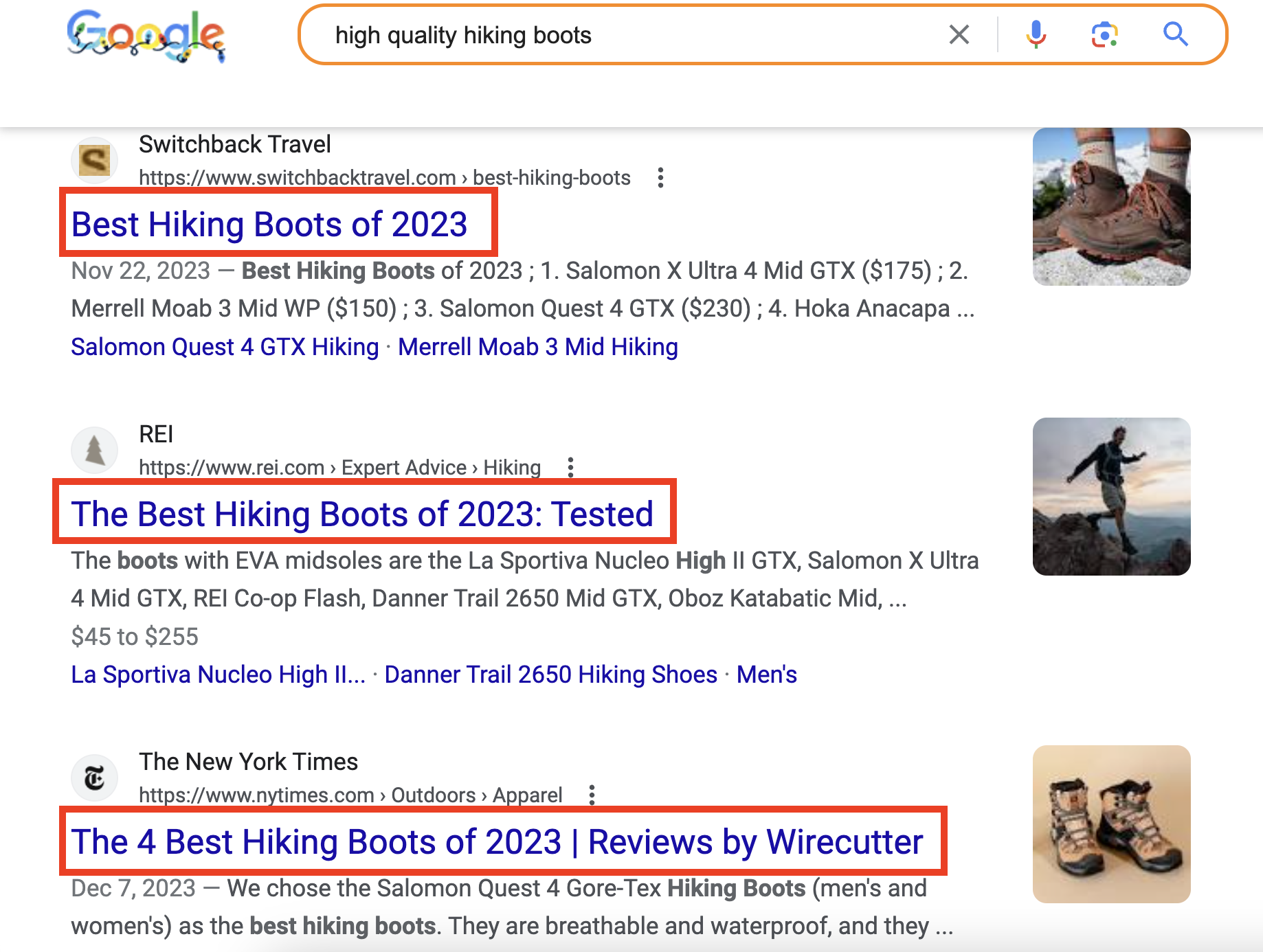
What is paid search?
Paid search is when businesses pay for their ads to appear in the search engine results.
The most common type of paid search is PPC (short for ‘pay-per-click’). The advertising model works in two ways – the bid-based model, which allows businesses to bid on specific keywords – and the flat-rate model, which allows them to pay a fixed fee each time someone clicks on their ads.
Even though it might be costly, the paid search method can deliver quick results and allow for quite precise customer targeting.
However, website optimization is still relevant for paid search as well. To make sure your ads stand out, you have to conduct keyword research on the words you want to rank for, spy on your competitors, create compelling ad copy, and target specific demographics to maximize ad visibility.
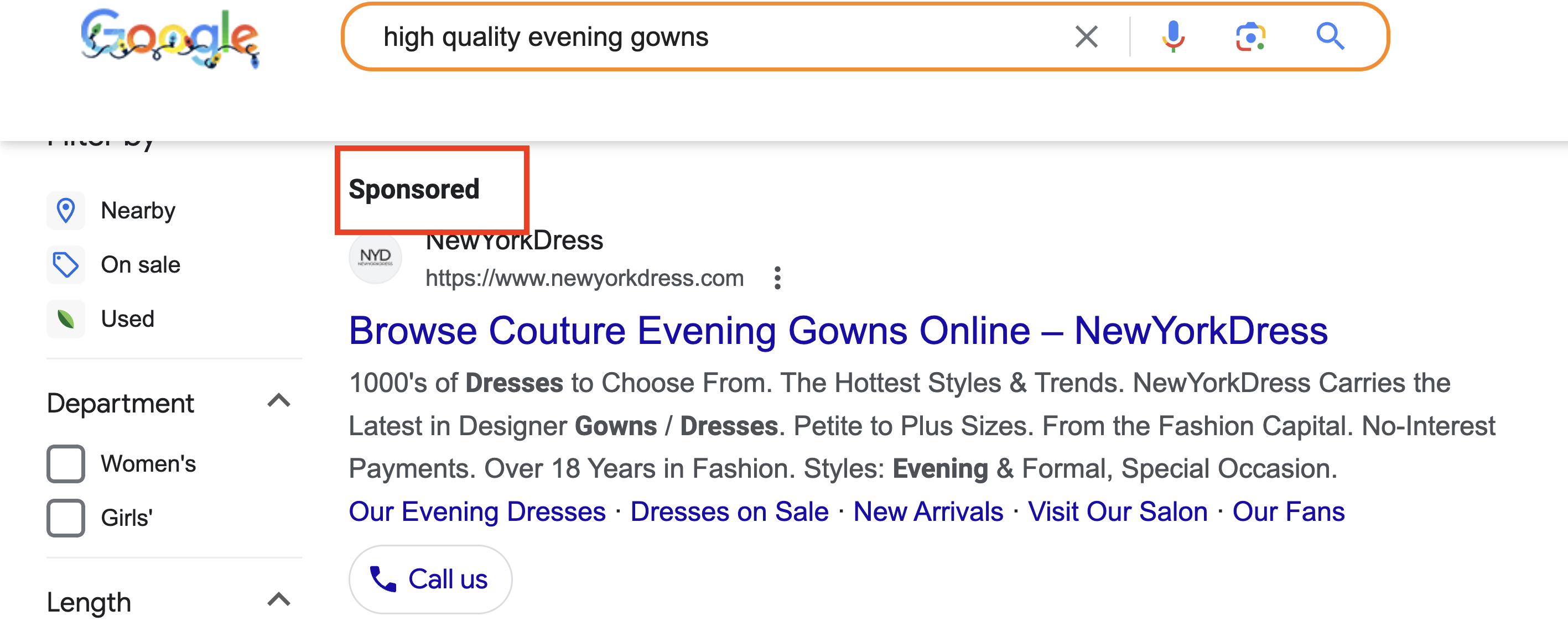
What is the main difference between organic and paid search?
As you might have already gotten the gist, the main difference between organic and paid search is that organic search refers to the free traffic your dropshipping store receives, while paid search means you pay for traffic.
Moreover, organic search relies on how well a website is optimized for SEO, while paid search involves paying search engines to place your ads on the results pages.
What are the pros and cons of organic search?
Pros
Long-term results
With organic search, your dropshipping store is likely to benefit from long-term results. Unlike paid ads, which will stop driving traffic to your online store once you stop paying, a well-SEO-optimized website can continue to attract visitors for a long period of time.
Greater credibility
Organic search results tend to be more trustworthy in comparison to ads A high ranking in organic search results lets customers know that your website is reliable and holds great authority in your dropshipping niche.
Cost-effective
While it may require a little bit of investment in appropriate tools, organic search doesn’t involve the ongoing costs associated with paid campaigns. This makes it a particularly appealing option for dropshipping stores operating on tighter budgets.
Cons
Time-consuming
When optimizing your store for organic traffic, you have to remember that it takes a lot of effort and time to achieve good SERP rankings. To get your dropshipping store a high ranking and keep it that way calls for consistent site optimization.
Constant changes
The algorithms that govern search results are constantly changing. This means you’ll have to adjust your SEO strategies according to the latest search engine updates. What works today doesn’t necessarily mean it’ll work tomorrow.
No guaranteed success
Despite your best efforts, organic search doesn’t offer any guarantee of success. The competitive nature of search rankings and the complexity of search algorithms can make it challenging to for anyone to achieve desired results.
What are the pros and cons of paid search?
Pros
Quick visibility
One of the best things about paid search is that it offers almost immediate visibility. Your dropshipping store can appear at the top of search results almost as soon as your PPC campaigns are active.
Measurable results
With paid search, you can easily measure the success of your ads. This data allows you to precisely track important ad metrics and use that data to adjust your ads.
Precise audience targeting
Paid search allows you to define your audience based on demographics, interests, location, shopping behavior, and many other categories. This precision ensures that your ads are seen by a highly relevant audience, increasing the likelihood of conversions.
Cons
High expenses
While paid search can drive quick results, it might become costly over time. Since pay for each click your ad receives, and competitive keywords can have high costs per click, over time, it can lead to significant advertising expenses.
Click doesn’t equal conversion
Even though paid search can generate a lot of traffic, not every click leads to a sale. Some users may click without the intention to buy, which can affect the overall effectiveness of your ad investment.
Best strategies for organic search
Keyword research
A successful site optimization starts with good-old keyword research. To have a chance at getting a good SERP ranking and targeting your preferred audience, you have to identify the most relevant keywords for your store as well as those that your potential customers are using while browsing the internet.
For instance, if your store specializes in luxury fashion products, keywords could include “luxury fashion store” or “designer brands.”
Tools like Ahrefs and SEMrush or free alternatives like Google’s Keyword Planner can help you out in the process.
Once you’ve found your keywords, start inserting them all across your website, including product descriptions, blog content, and meta titles.
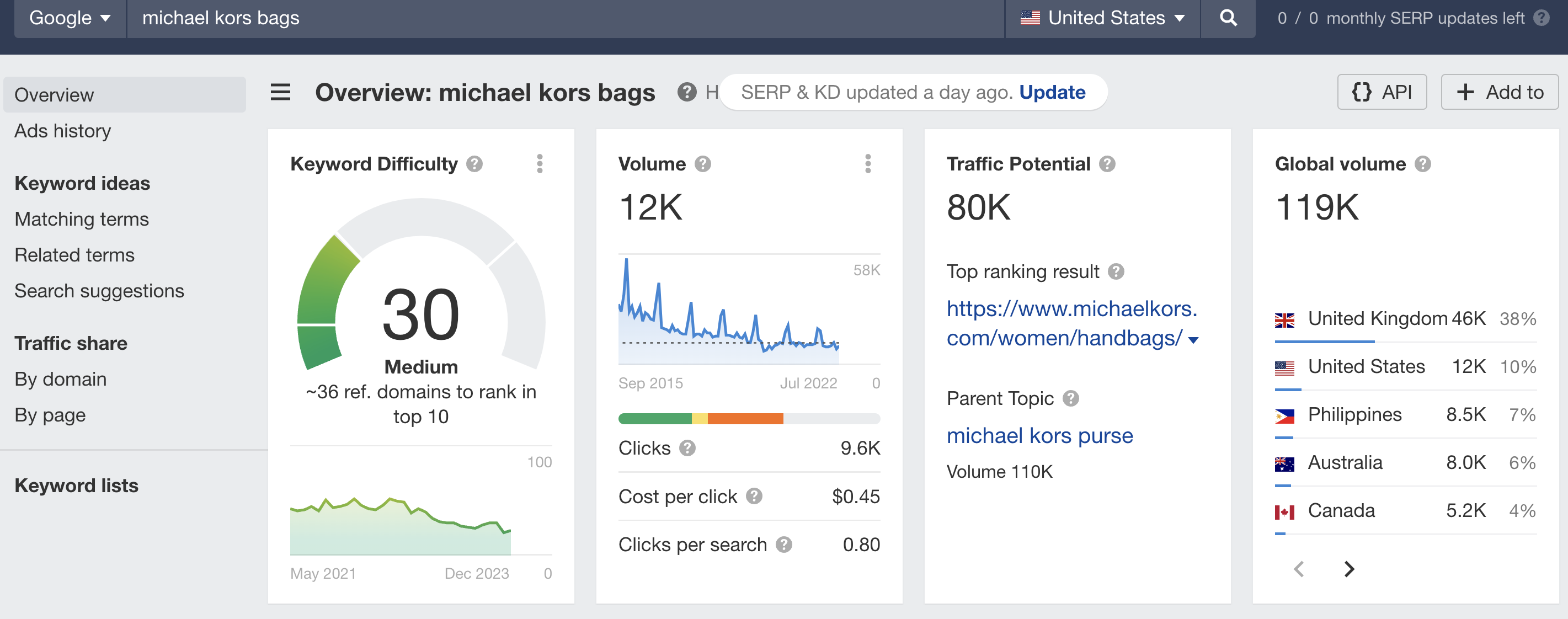
High-quality content
High-quality content involves creating informative and relevant blog posts, tutorials, guides, and even product reviews that will offer your customers some kind of value.
For a dropshipping store selling clothing, for instance, blog posts like “Most trending clothing articles for 2024” can attract visitors searching for the latest products.
Use multimedia, such as images, videos, or infographics, to make your content even more engaging.
High-quality images
Incorporating high-quality images is vital for attracting and retaining customers, as well as improving your SEO.
For instance, if you’re dropshipping fashion items, use images that showcase them in various angles and settings. Optimize these images with descriptive file names (e.g., “vintage-leather-backpack.jpg”), and use alt tags (e.g., “Vintage Leather Backpack in Brown”) to improve image search visibility.
Remember, large image files can slow down your site, so you can compress them with free tools, such as compressjpg.com, without compromising their quality.
Simple website structure
A simple website structure is key for both user experience and search engine indexing.
For example, if you’re planning on starting a dropshipping clothing business, one way you could organize your products is by creating a few main categories, such as ‘Clothing’, ‘Shoes’, and ‘Accessories’, with further subcategories for each type of products such as ‘dresses, ‘skirts’, and ‘pants’.
Ensure that your site has a logical flow and a menu that is easy to navigate around.
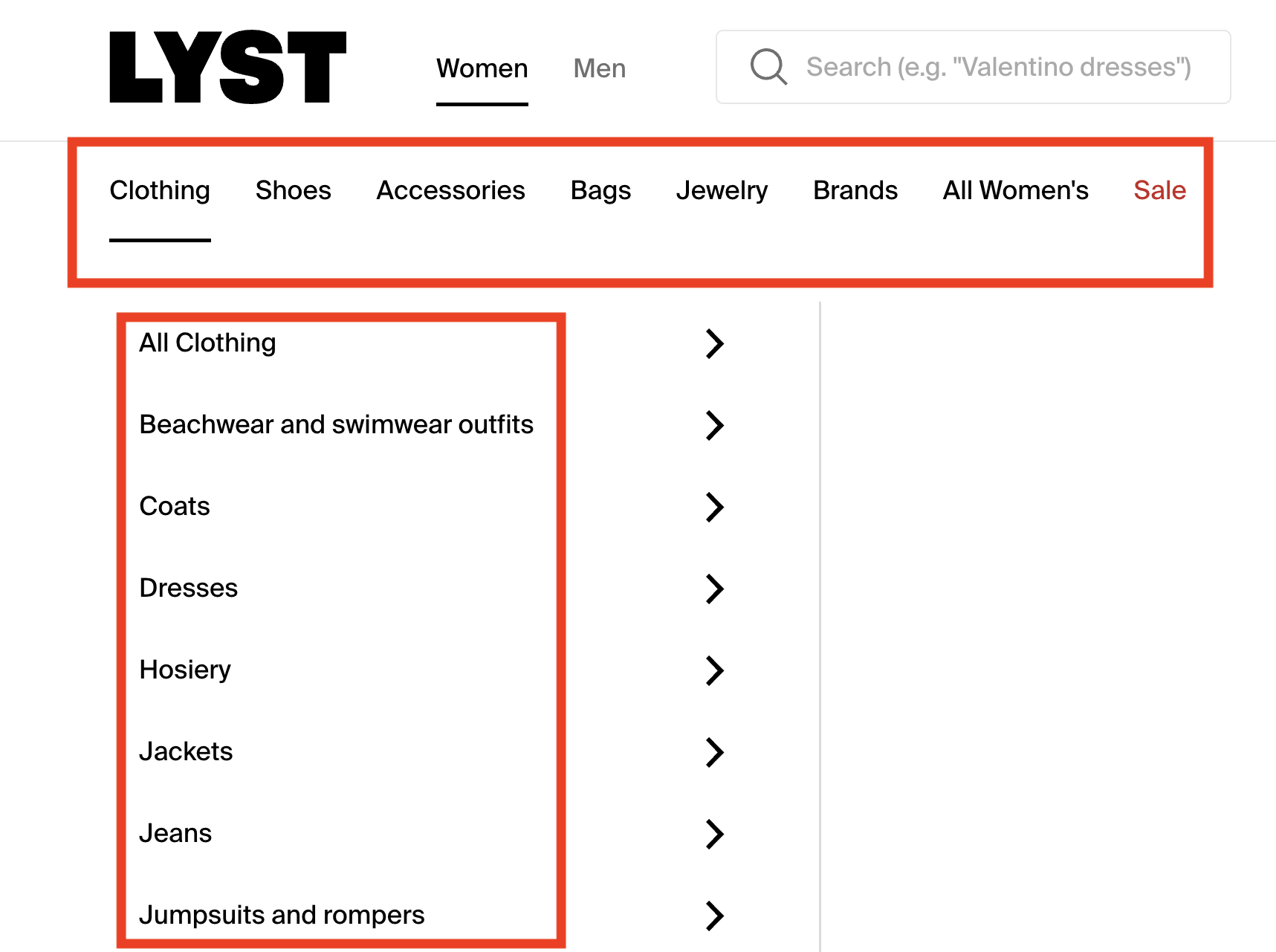
Mobile-friendly design
With the majority of internet users accessing the web via mobile devices, search engines have started prioritizing websites with mobile-friendly designs.
This means you have to make sure your website is responsive to different screen sizes and devices.
You can use Google’s Mobile-Friendly Test tool to check how well your site performs on mobile devices and make necessary adjustments.
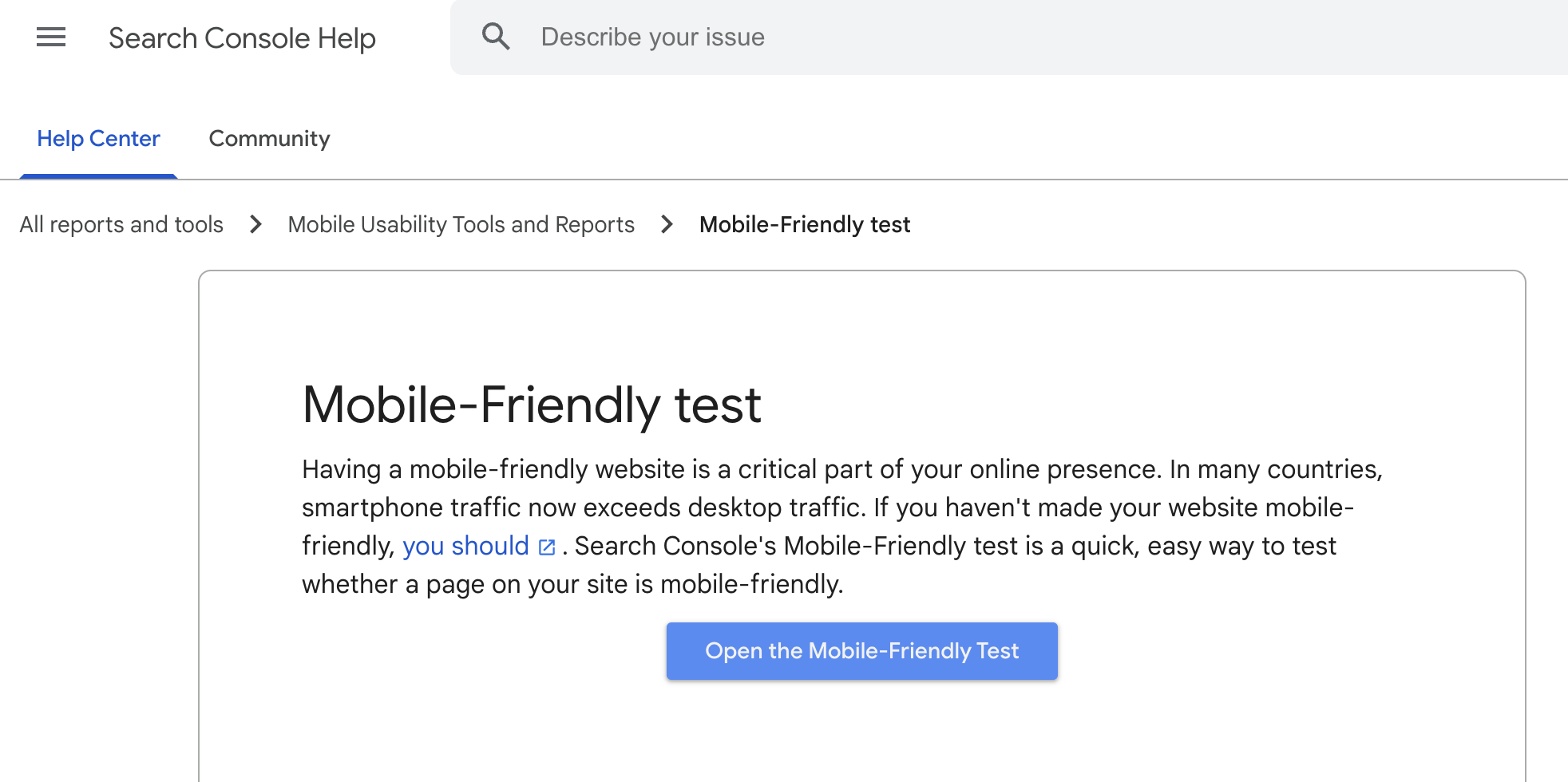
Great page speed
A slow page loading speed can make visitors frustrated, increase bounce rates, and reduce conversion rates.
It can also affect SEO and search engine rankings by leading to lower crawl rates, indexing fewer pages, and decreasing site visibility in search results.
Some strategies to improve page speed include:
- compressing images
- minimizing the use of large media files
- reducing server response time
- reducing the number of redirects
- Check your site’s speed with Google’s PageSpeed Insights.
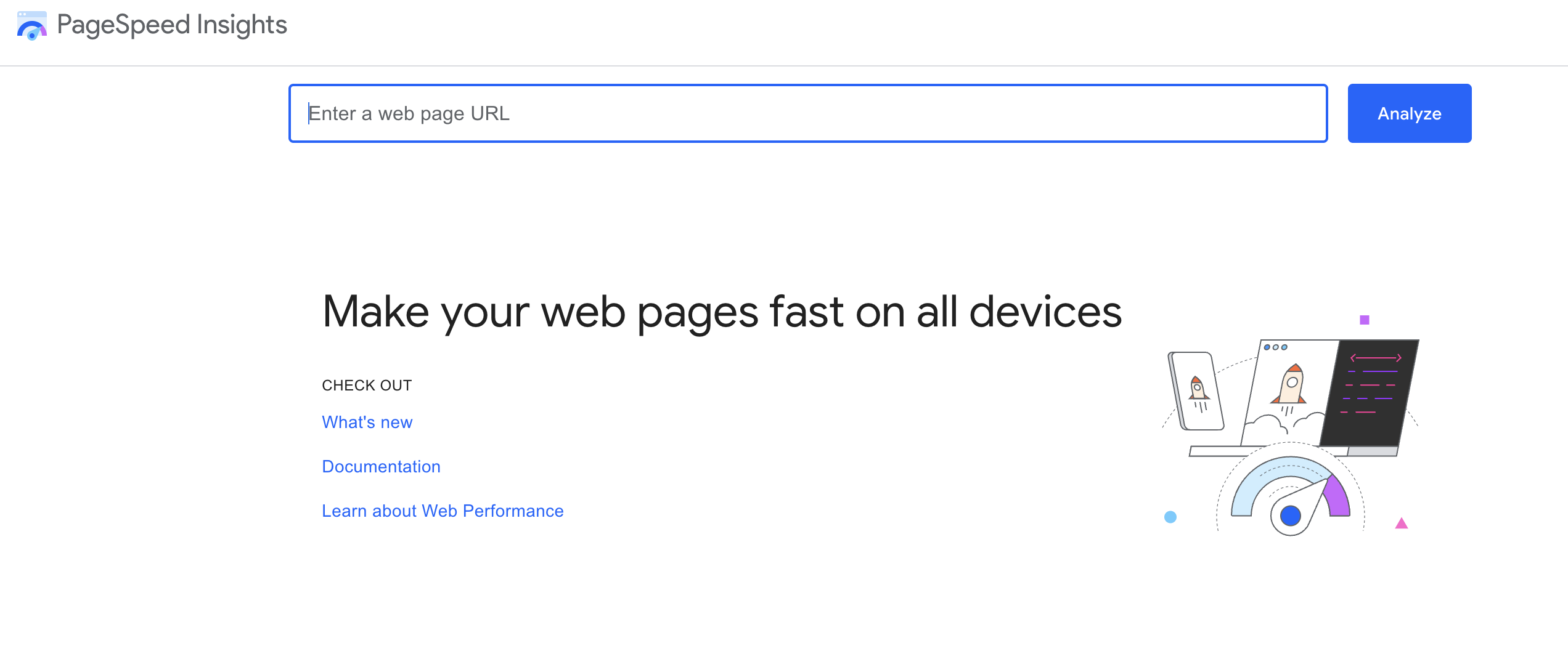
Building backlinks
Building backlinks from reputable websites is a great way to improve your store’s authority and search ranking.
Remember, quality will always be more important than quantity. The best backlink strategy is to focus on getting links from high-authority, relevant industry websites, such as blogs or business directories.
Best strategies for paid search
Write compelling ad copy
Writing an ad copy that has the right amount of engagement is crucial in capturing the attention of potential customers.
For instance, if you’re advertising a line of new designer fashion products available in your store, focus on including a captivating heading, short main body, and actionable CTA. Take a look at the examples below:
Example 1
Heading: Unveil the Trendsetter in You!
Main text: Explore our latest designer clothing line. Each piece is a blend of luxury and contemporary chic.
CTA: Elevate your wardrobe today
Example 2
Heading: Dress to Impress with Designer Luxury.
Main text: Be the first to experience our newest collection of designer wear. Immerse yourself in the sophistication and allure of high-end fashion.
CTA: Indulge in Luxury
Test different versions of the ad copy to see what resonates best with your audience.
Check out:
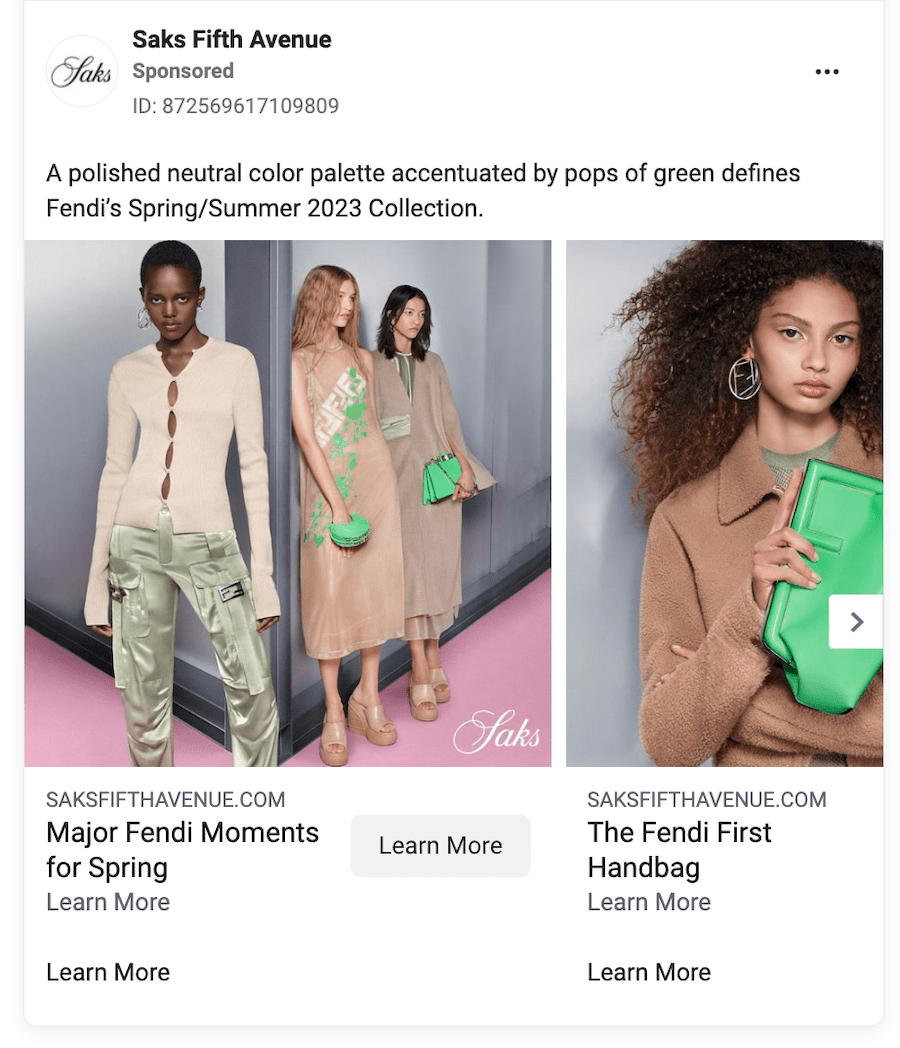
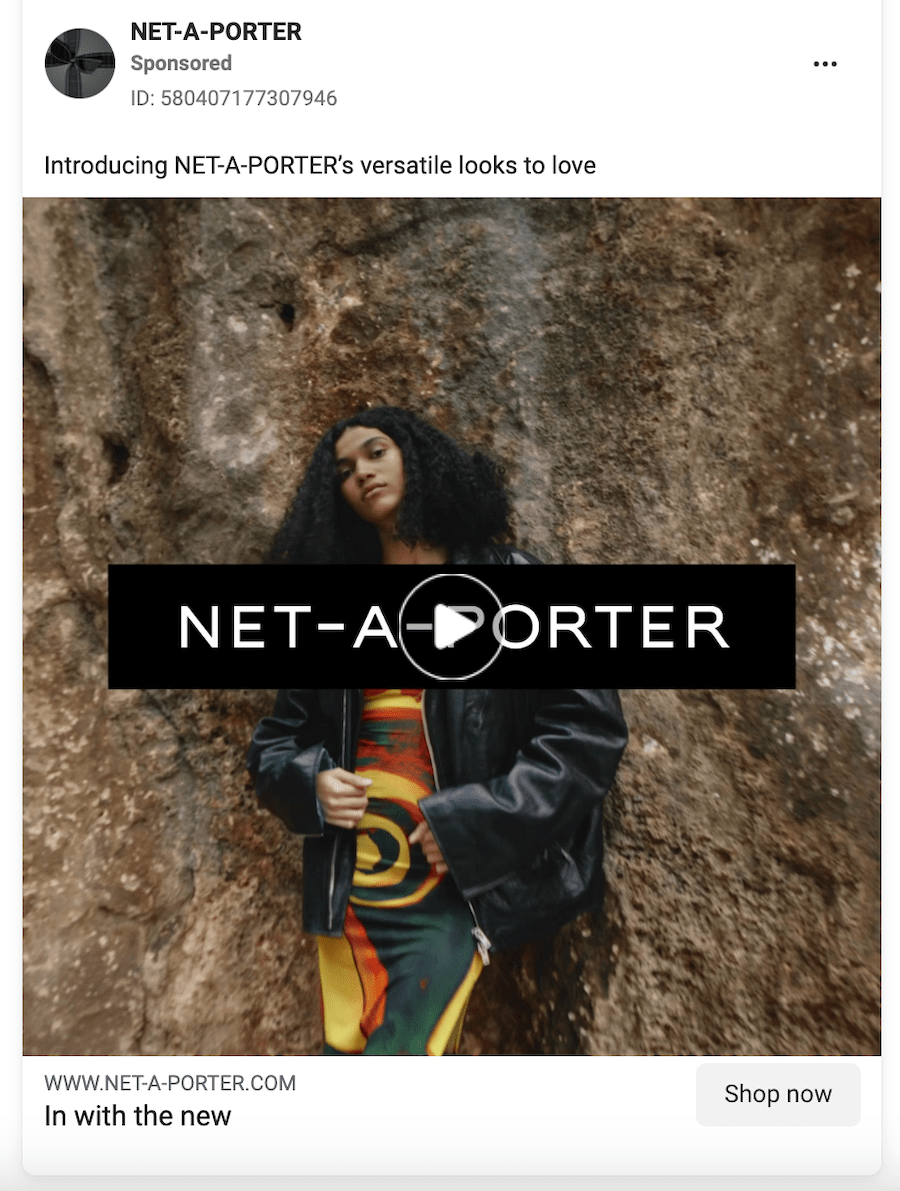
Use ad extensions
Ad extensions enhance your paid search ads by providing additional information relevant to your ad. This can be anything from product prices to contact details.
The benefits of using ad extensions in paid search include improved ad visibility, higher click-through rates, and the ability to provide more detailed information to potential customers.
Depending on the information you wish to include, there are plenty of ad extensions you can choose from such as sitelink, callout, promotion location, image, lead form, and structured snippet extensions, to name a few.
To demonstrate, sitelink extensions can lead users to specific pages on your website by allowing you to insert additional links. Take a look at the ad below for example.
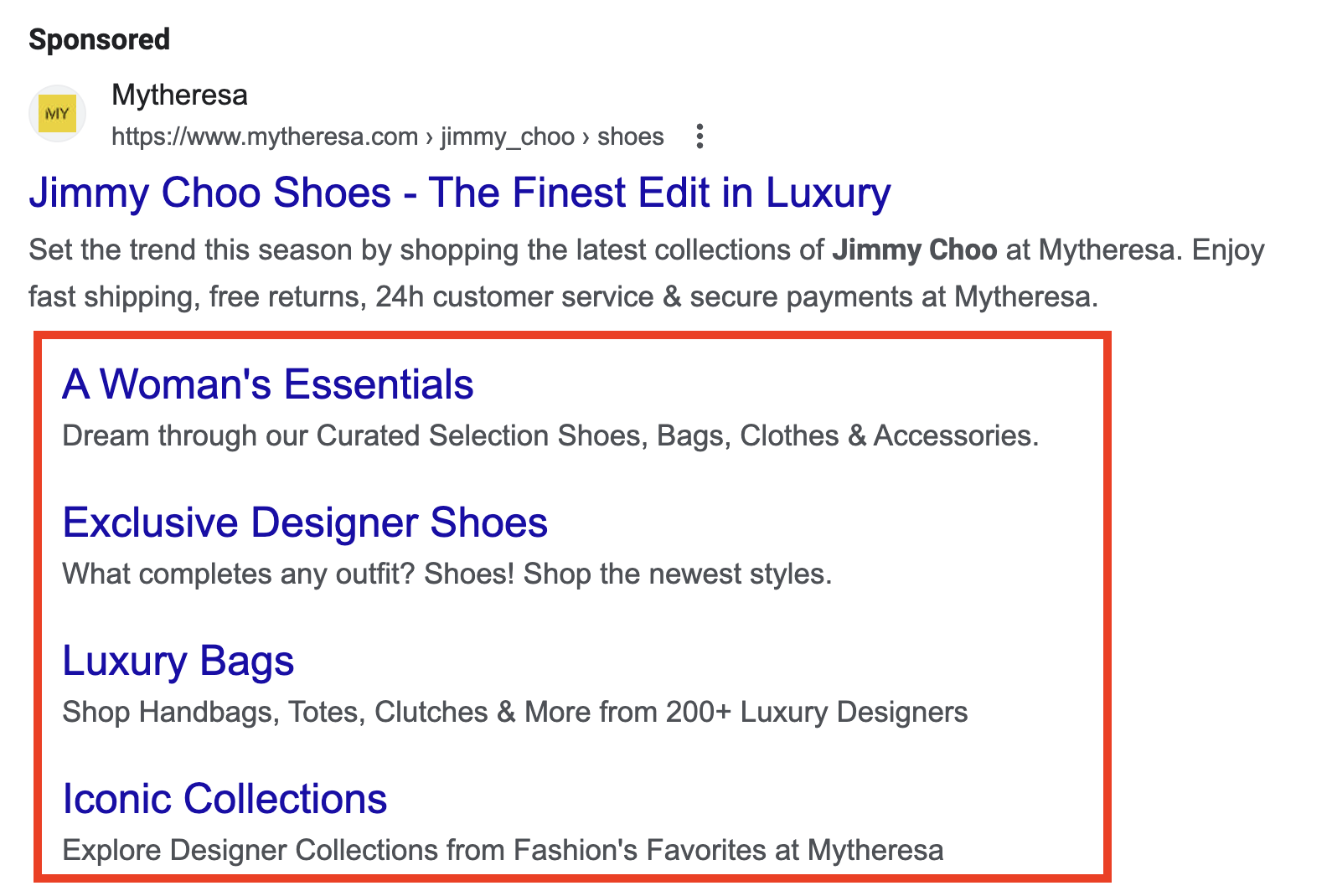
Target and retarget
Using both targeting and retargeting is essential for maximizing the efficiency of your ad campaigns.
Targeting helps attract new potential customers that fit your buyer persona, thus, increasing brand awareness; retargeting focuses on reaching people who have already engaged with your dropshipping store, thus increasing conversion rates.
Manage your budget
Budget management is essential in paid search. You have to set a budget that allows you to test and optimize your ads without overspending.
For instance, it’s always a good idea to allocate more budget to high-converting keywords or ads that have been performing well and not invest as much in those that haven’t been bringing the best results.
Track results
Analyzing your campaign results is vital to understand if your ads actually drive traffic to your dropshipping store and if they help you convert visitors into customers.
Ad metrics can easily be tracked on the platform you’re using to run ads (whether it’s Google ads, Facebook ads, or Instagram ads).
Regularly tracking your metrics allows you to optimize your campaigns for better performance and identify areas for improvement.
Should you use organic or paid search?
Optimizing your dropshipping store for both organic and paid search can significantly enhance your online presence as well as your sales.
By focusing on SEO practices like keyword research, generating quality content, and ensuring a responsive store design, you can start driving strong organic traffic.
Simultaneously, leveraging the incredible targeting capabilities of paid search can provide you with record search engine visibility.
Balancing these two strategies will ultimately lead you to build sustained business growth.
FAQ
-
The choice between organic and paid search depends on your business goals and resources. Organic search is much more cost-effective and builds long-term results, while paid search offers quick visibility but it’s a more expensive investment. Ideally, a balanced approach using both strategies works best for most businesses.
-
SEO is completely organic. It involves optimizing your website and content to naturally rank higher in search engine results, without paying for placement.
-
An example of an organic search is when a user types a query into a search engine like “best hiking shoes” and clicks on a non-advertised link in the search results.
Related articles
Our clients' success stories speak volumes about the impact BrandsGateway has had on their businesses.
View More Articles








:format(webp)/https%3A%2F%2Fbrandsgateway.com%2Fapp%2Fuploads%2F2024%2F07%2FScreenshot_20240618_140550_Gallery.jpg)
:format(webp)/https%3A%2F%2Fbrandsgateway.com%2Fapp%2Fuploads%2F2025%2F04%2Freview-scaled.jpg)
:format(webp)/https%3A%2F%2Fprod-brandsgateway-images-do.s3.fr-par.scw.cloud%2F2019%2F04%2F6-Best-Men%E2%80%99s-Clothing-to-Sell-in-2019.jpg)
:format(webp)/https%3A%2F%2Fprod-brandsgateway-images.s3.fr-par.scw.cloud%2F2022%2F02%2Finstagram-stories-dropshipping-store-c7eaad24-d54.jpg)
:format(webp)/https%3A%2F%2Fbrandsgateway.com%2Fapp%2Fuploads%2F2025%2F03%2Fstartup-costs-scaled.jpg)
:format(webp)/https%3A%2F%2Fbrandsgateway.com%2Fapp%2Fuploads%2F2025%2F03%2Fgiveaway-scaled.jpg)
:format(webp)/https%3A%2F%2Fbrandsgateway.com%2Fapp%2Fuploads%2F2024%2F06%2Fwindow-display.png)
:format(webp)/https%3A%2F%2Fbrandsgateway.com%2Fapp%2Fuploads%2F2025%2F03%2Fniche-store-scaled.jpg)
:format(webp)/https%3A%2F%2Fbrandsgateway.com%2Fapp%2Fuploads%2F2025%2F03%2Fshopify-chargebacks.jpg)